Splendors and miseries of renovation, part 2
My second part about the good and not so good of renovation last year here. This time mainly about the renovation of residential buildings:
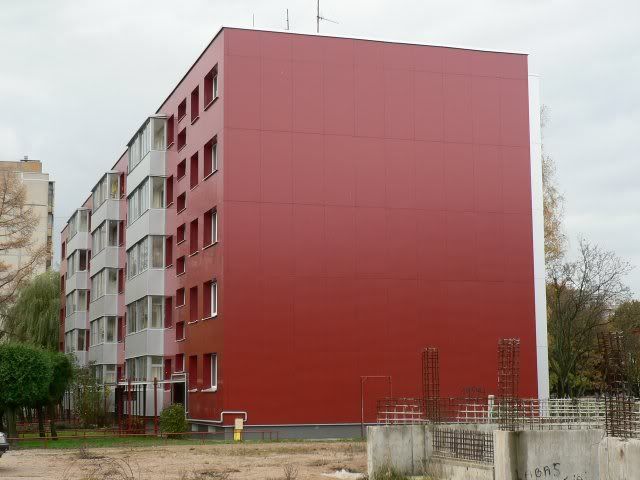
About 40% of the primary energy used in Europe is used in the households. In Lithuania this proportion is even higher: about 60% of the primary energy used in this country is used in the households. So everyone could imagine how big gains could be achieved implementing various means allowing to save the energy in the buildings ...
Despite the obvious necessity to use energy saving means the renovation of the multiflat residential buildings is probably the most difficult process in this country: early in the 1990s the houses were "privatized" (simply declaring that the actual residents are the owners of the flat) and now any activities requires to achieve the agreement with the owners of the house ... Despite that according the new laws it is sufficient to get agreement from the 50%+1 owner there are many cases when those unhappy residents are simply refusing to pay their financial part for the renovation ....
But some activities are going on anyway. And the results are different as we could expect.
The very typical form of the renovation is as follows.
Typical 9-story commieblocks last July during the process of renovation:
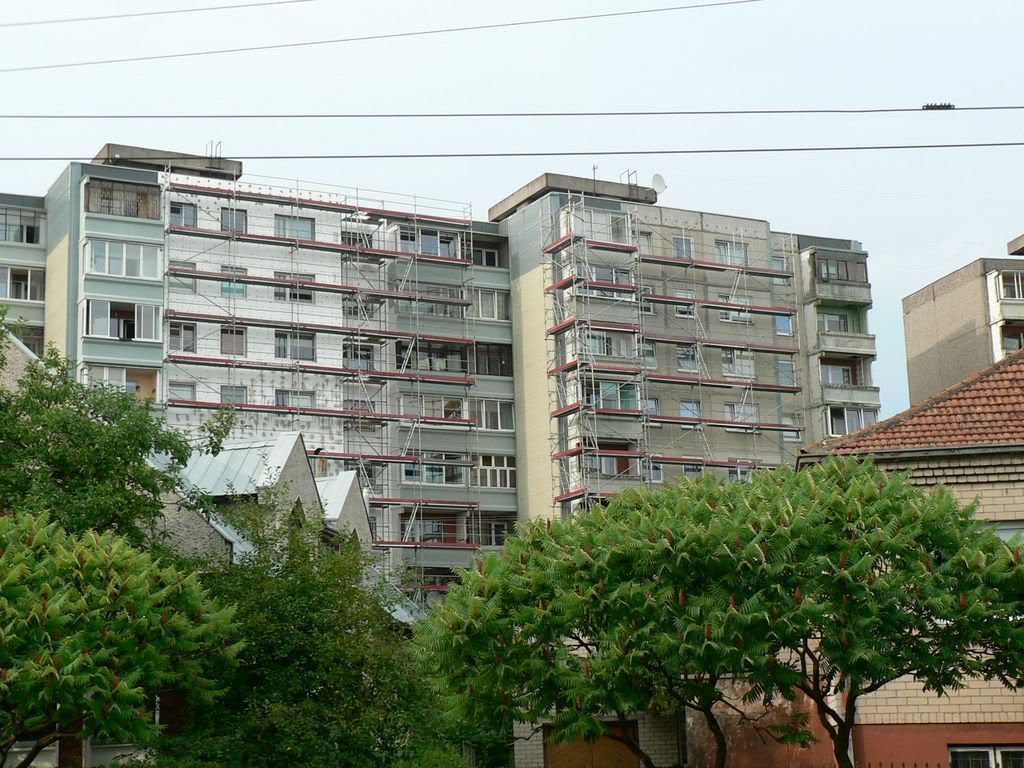
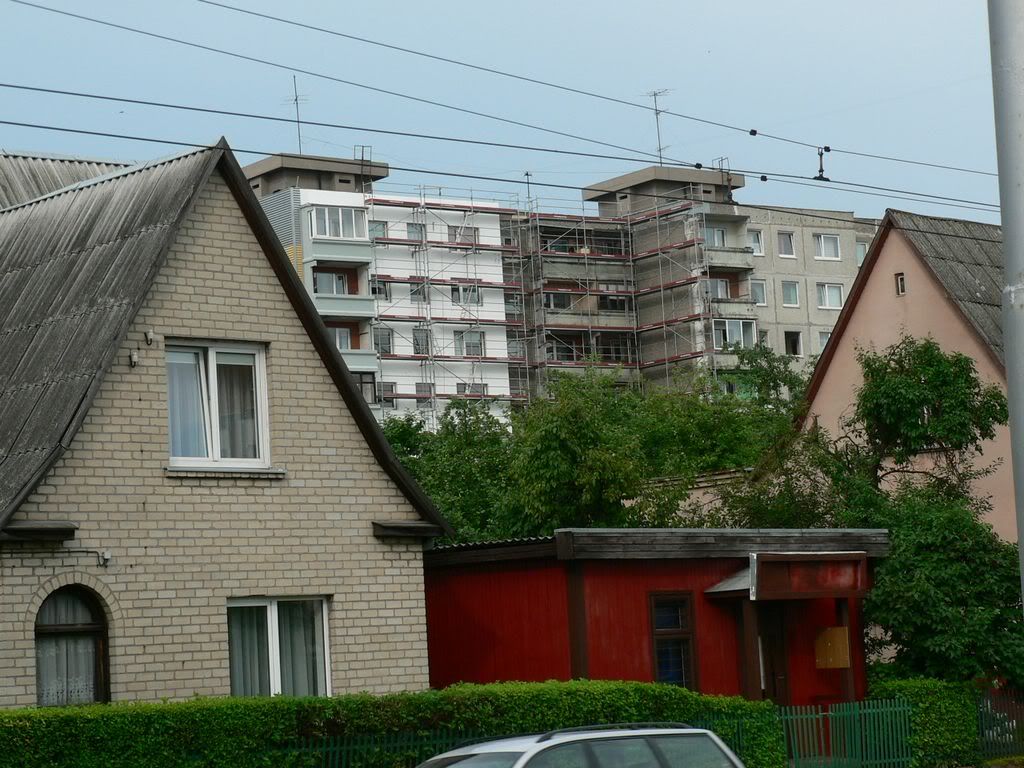
Ant the same buildings in November with their not renovated neighbors:
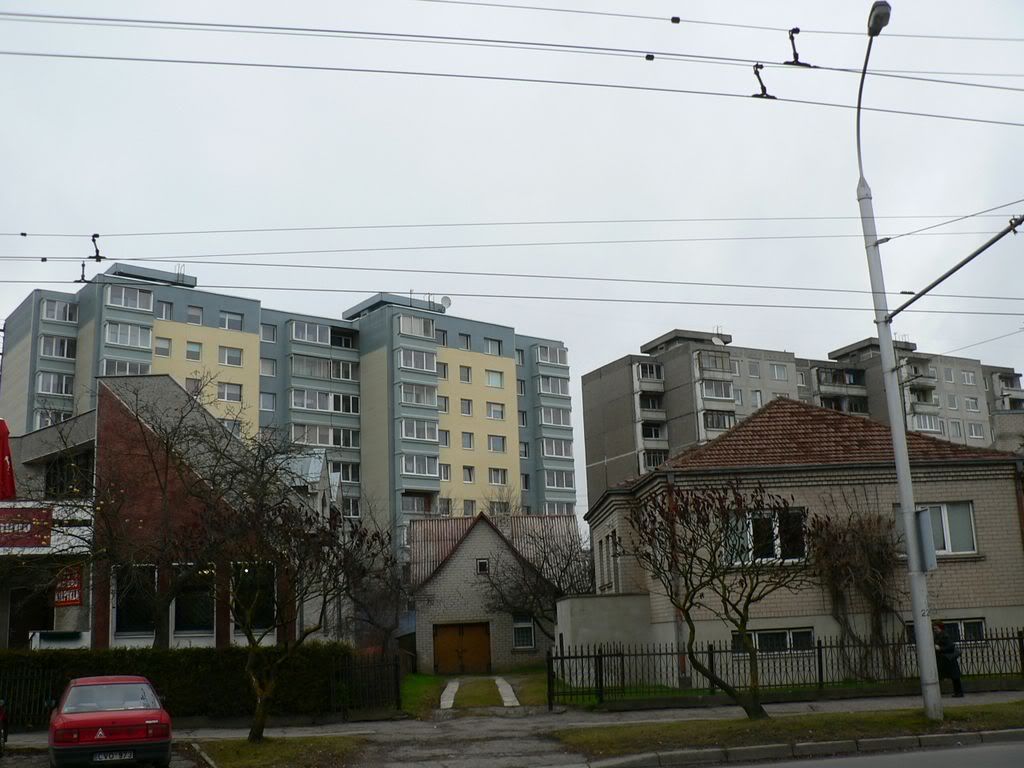
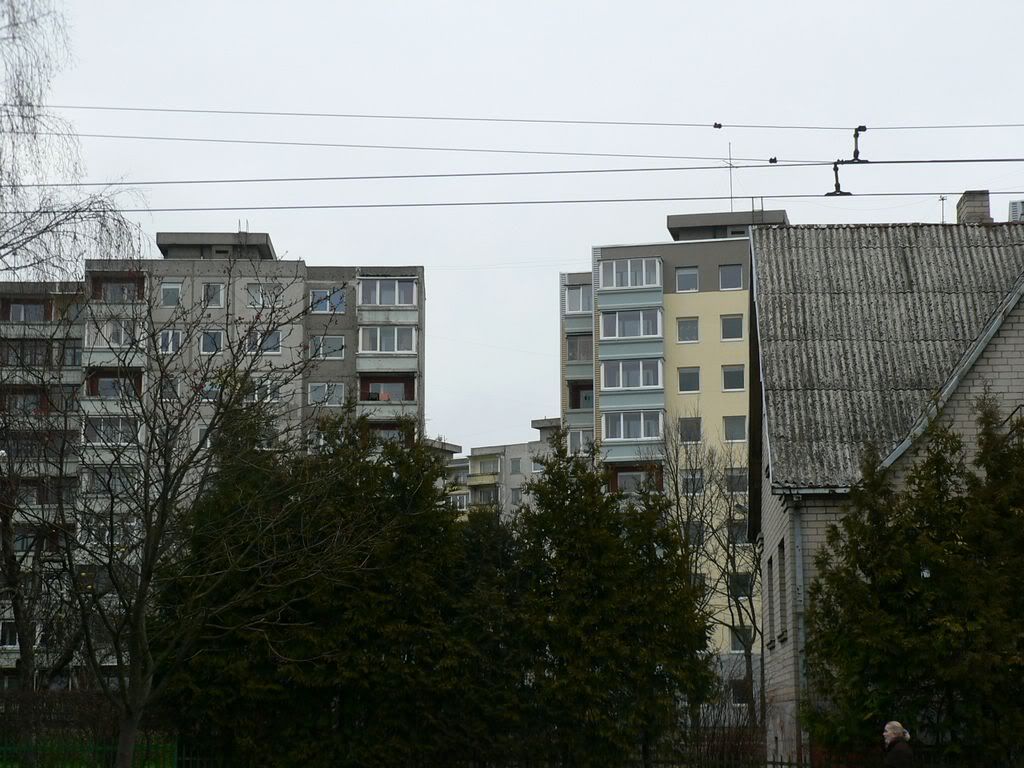
Older renovated houses. But my impression is that such style of renovation isn't long standing and 10 years later those buildings will look badly:
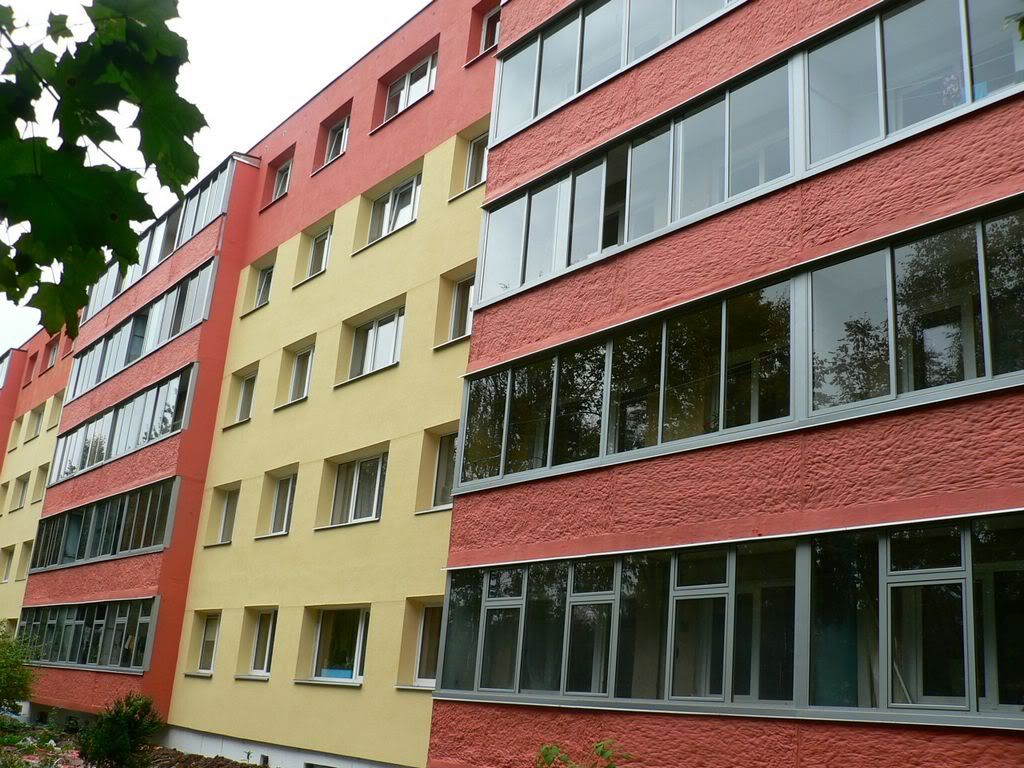
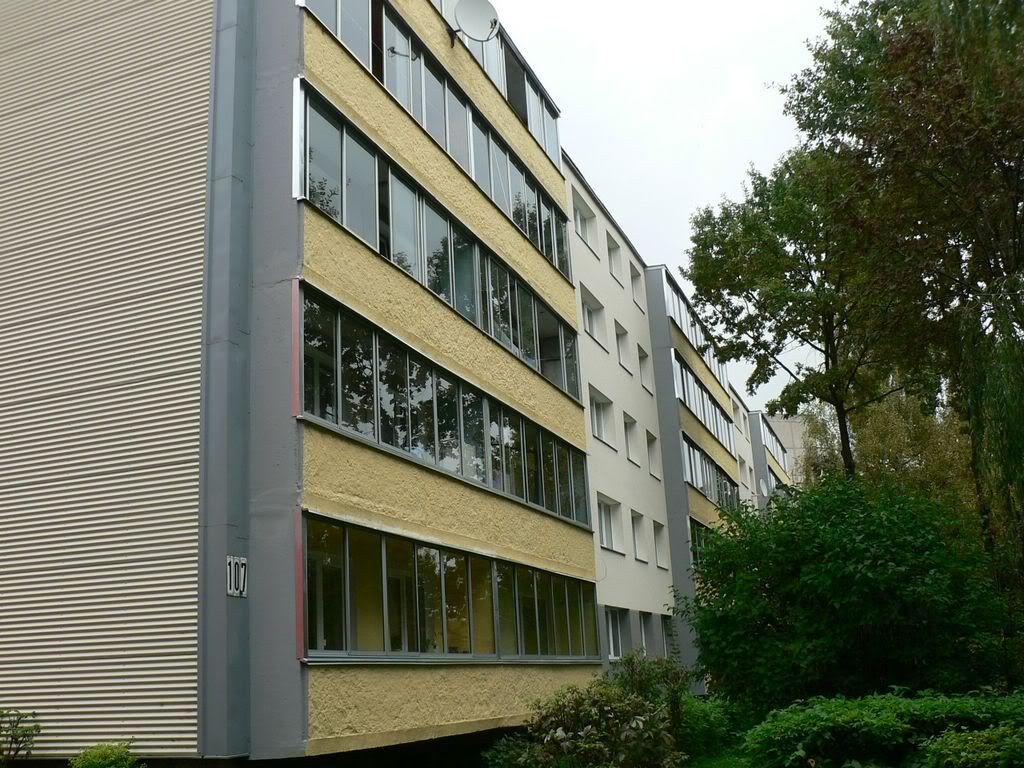
Probably the best case for the commieblock renovation. But this case is more expensive:
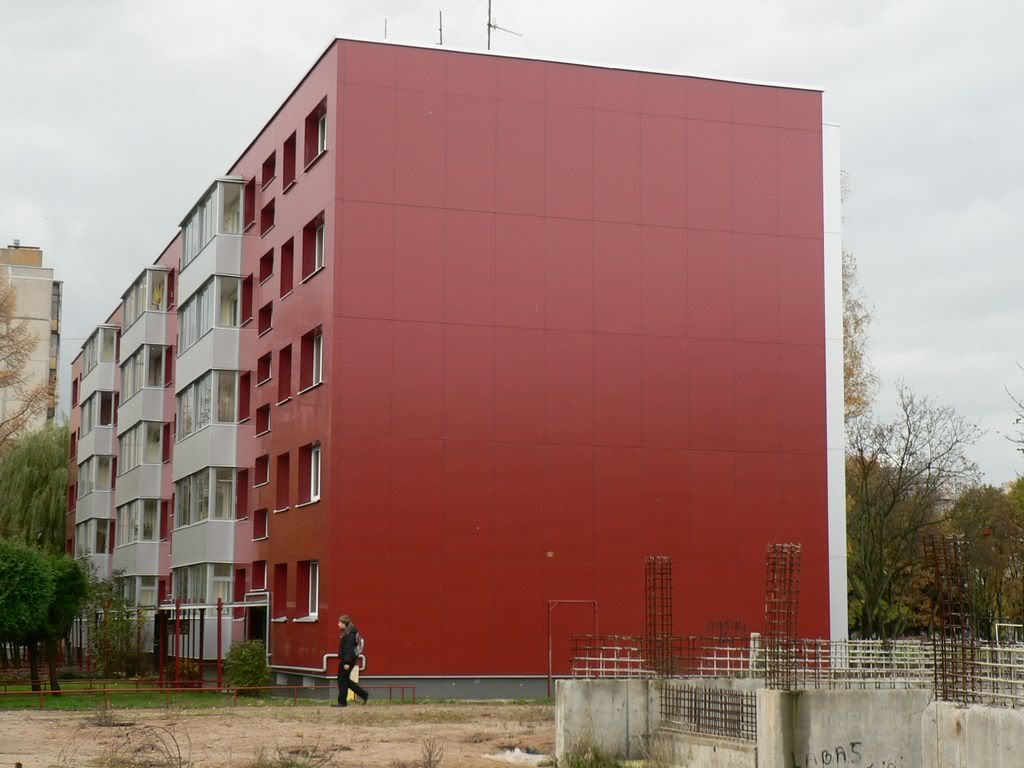
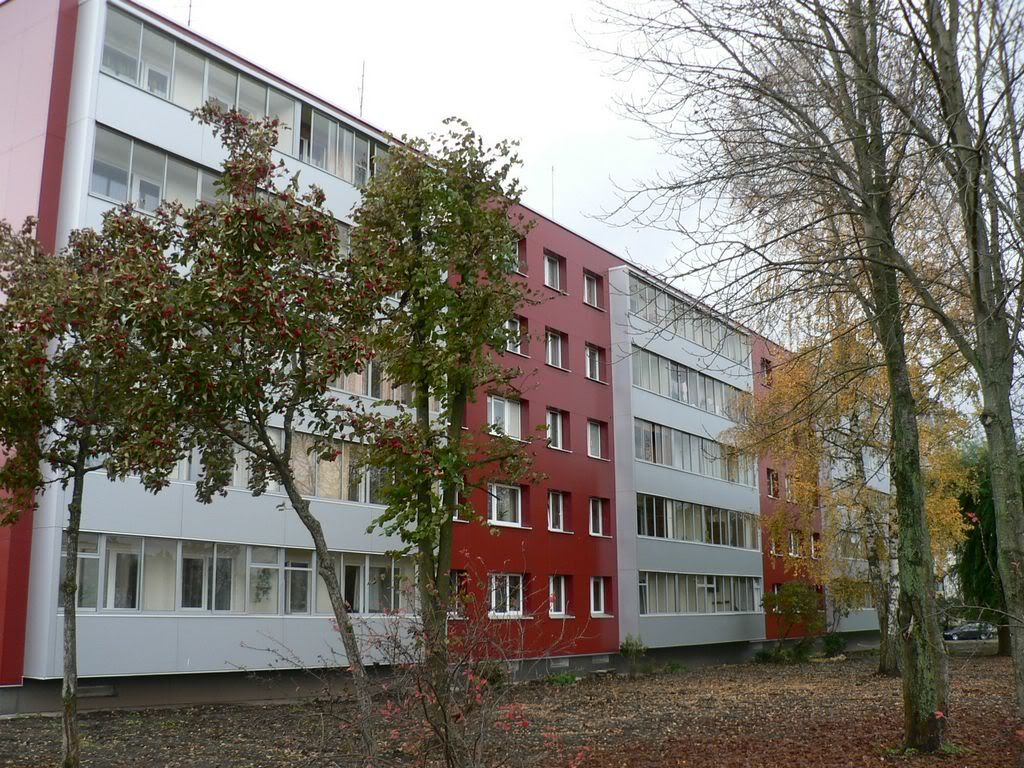
Contrast: renovated and not renovated :)
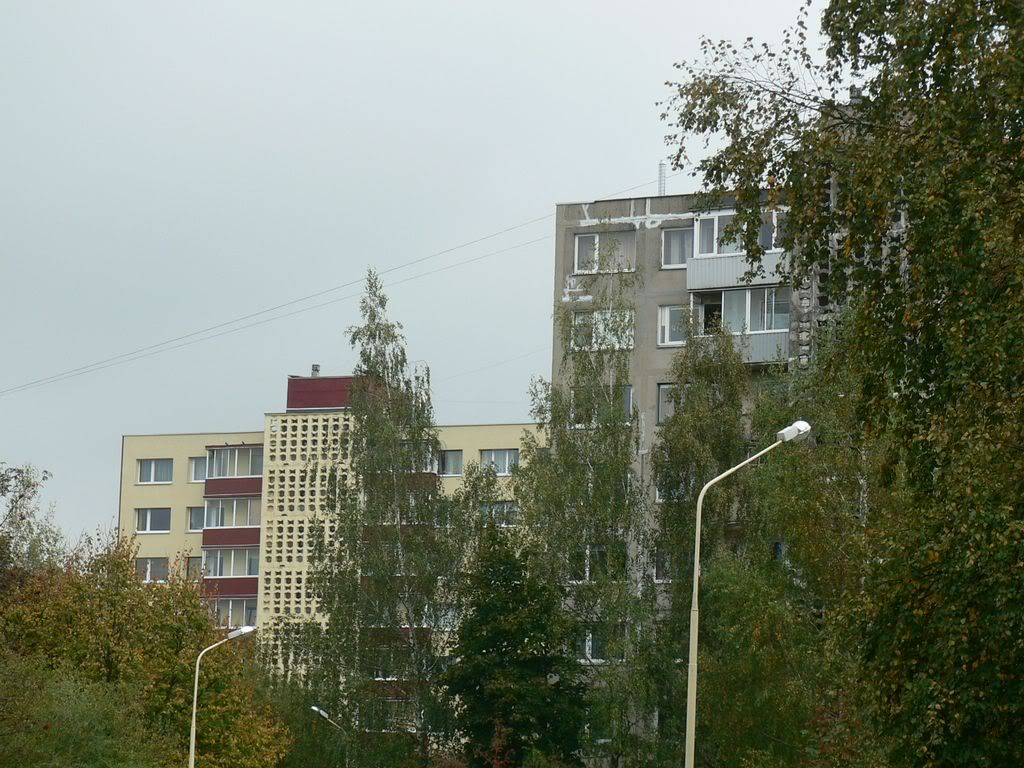
Another example: still not renovated house from early 1970s:
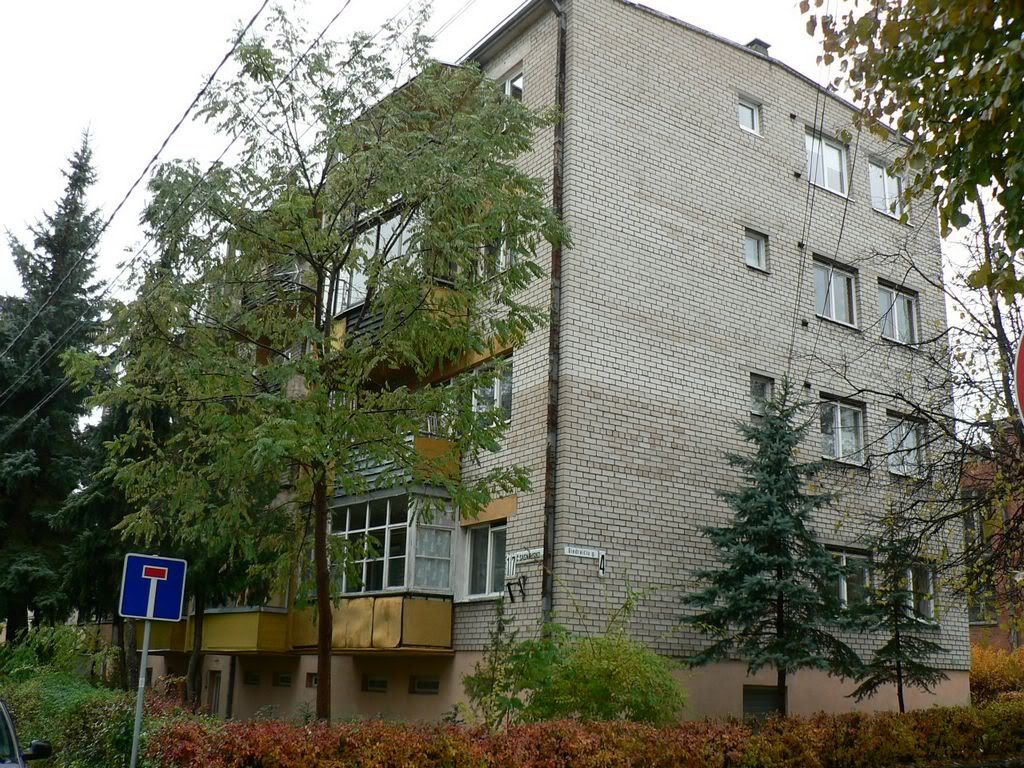
And it's recently renovated neighbor:
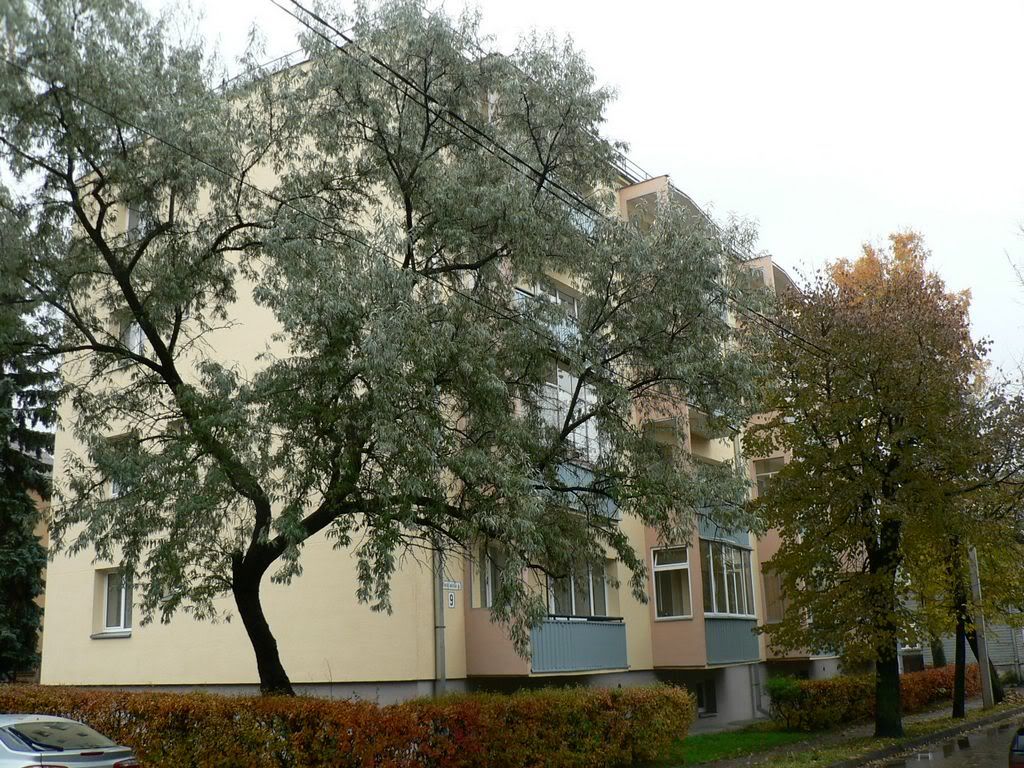
The example of good renovation: 5-story house has been renovated maintaining all former details and even the color:
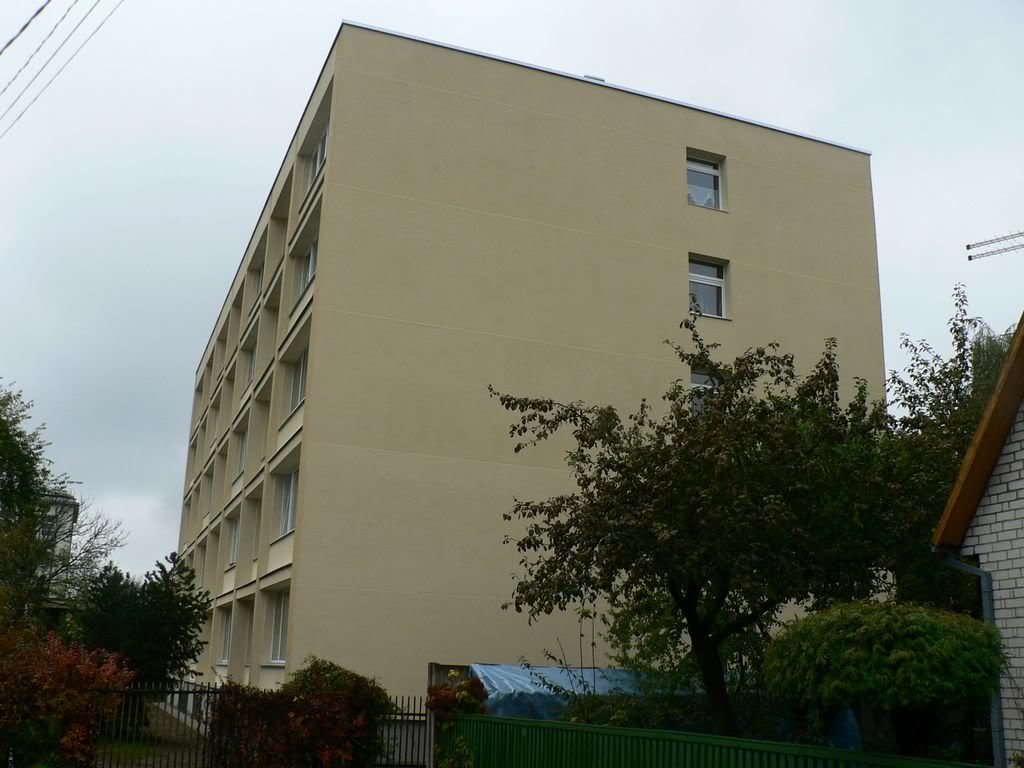
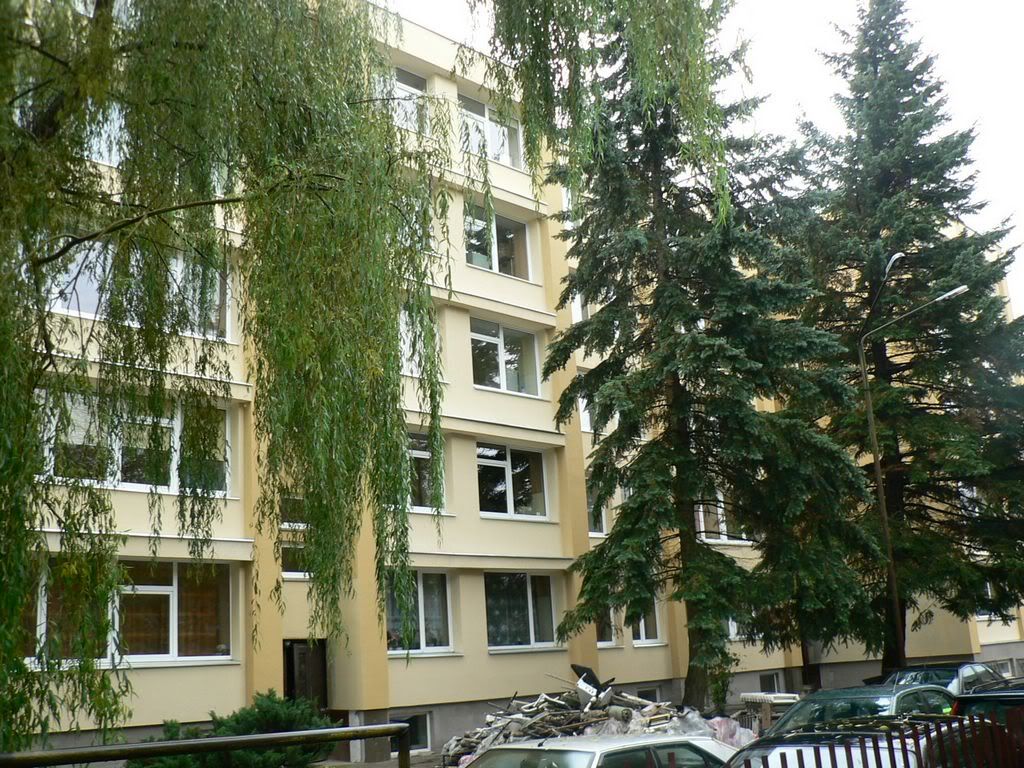
When I was near this house in October I still found the remains of old heating system :)))
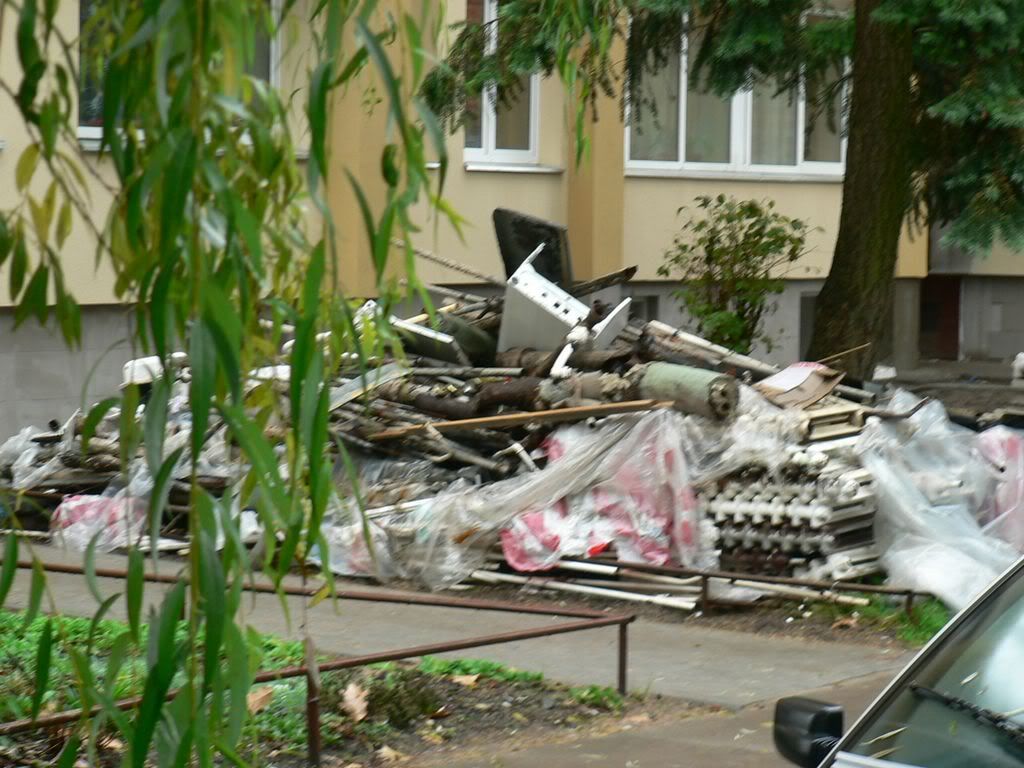
Even older houses pre-WWII time to time are renovated also to improve their thermical properties:

Two good 2010 renovation examples from the central street of Kaunas - Laisves aleja. Center anyway :)))
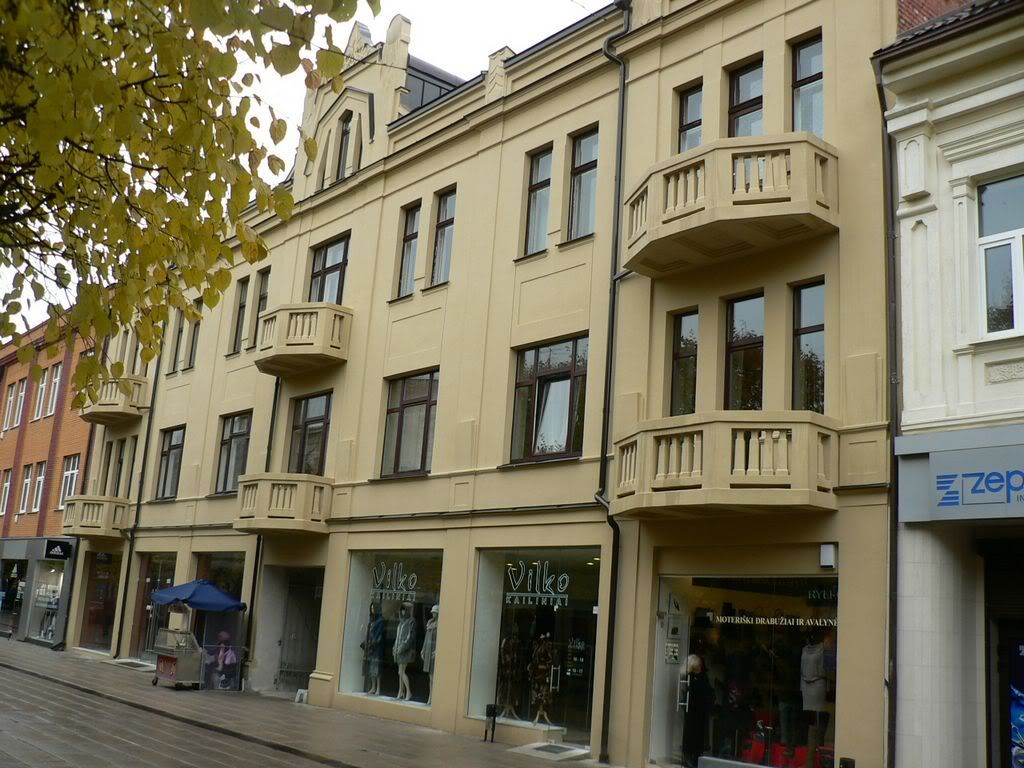
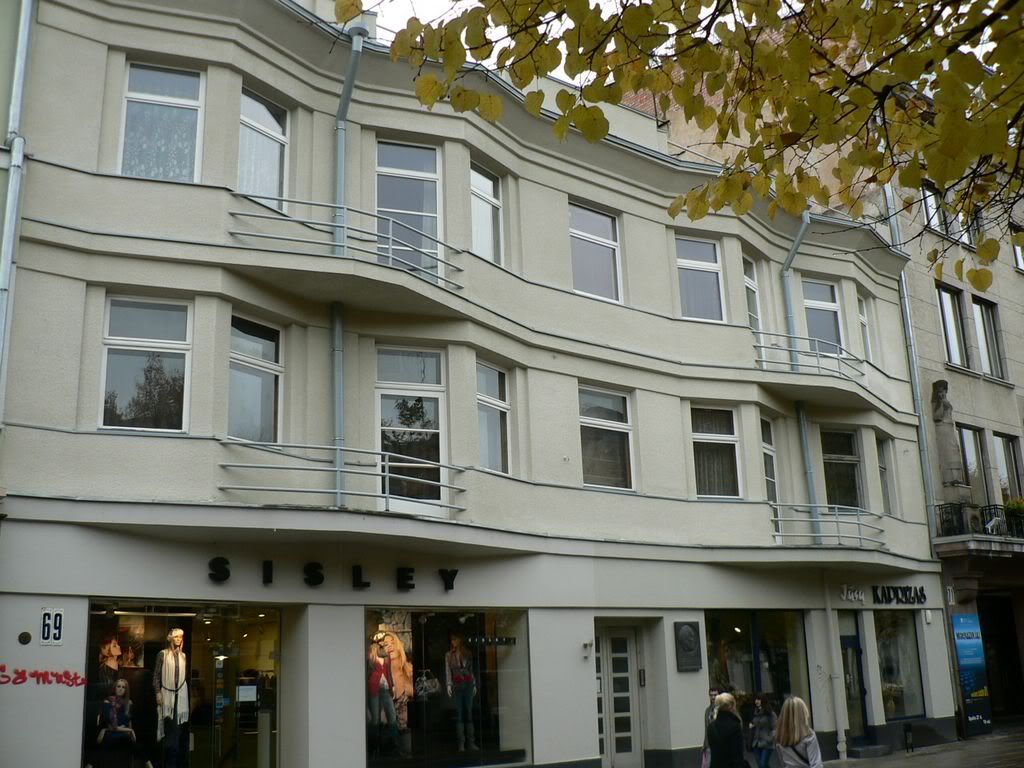
This house in the center wasn't only renovated - it was completely reconstructed. And I like the result:
Photo from May 2009:
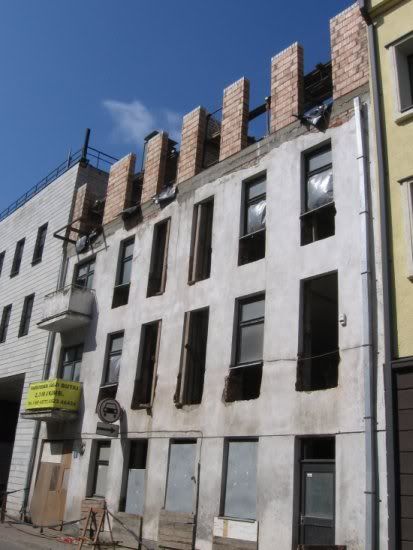
And photo from November 2010:
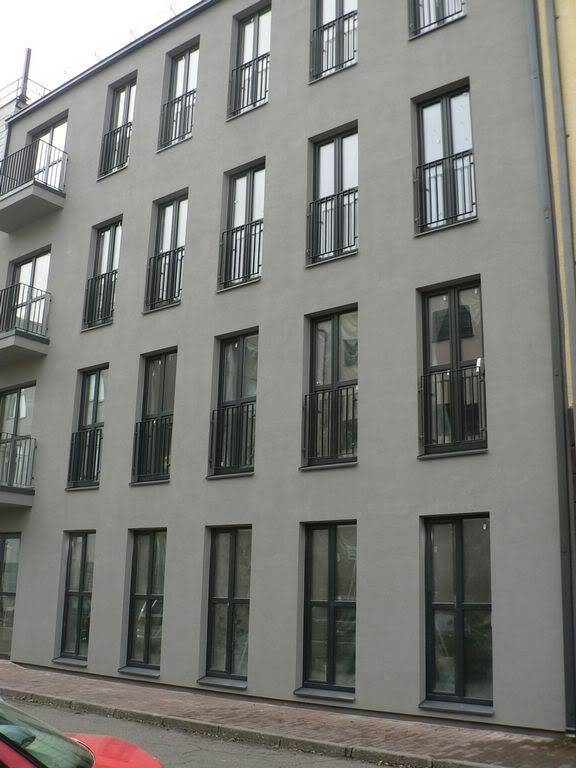
This reconstruction I don't like ...
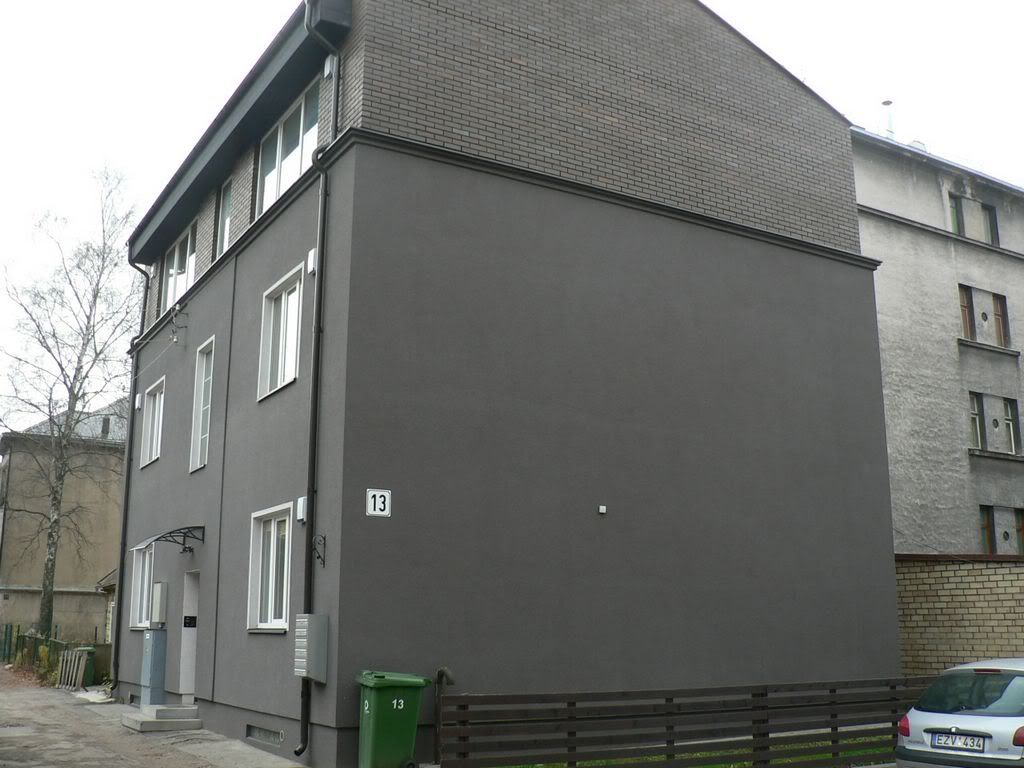
Renovated dormitory - better than was before:
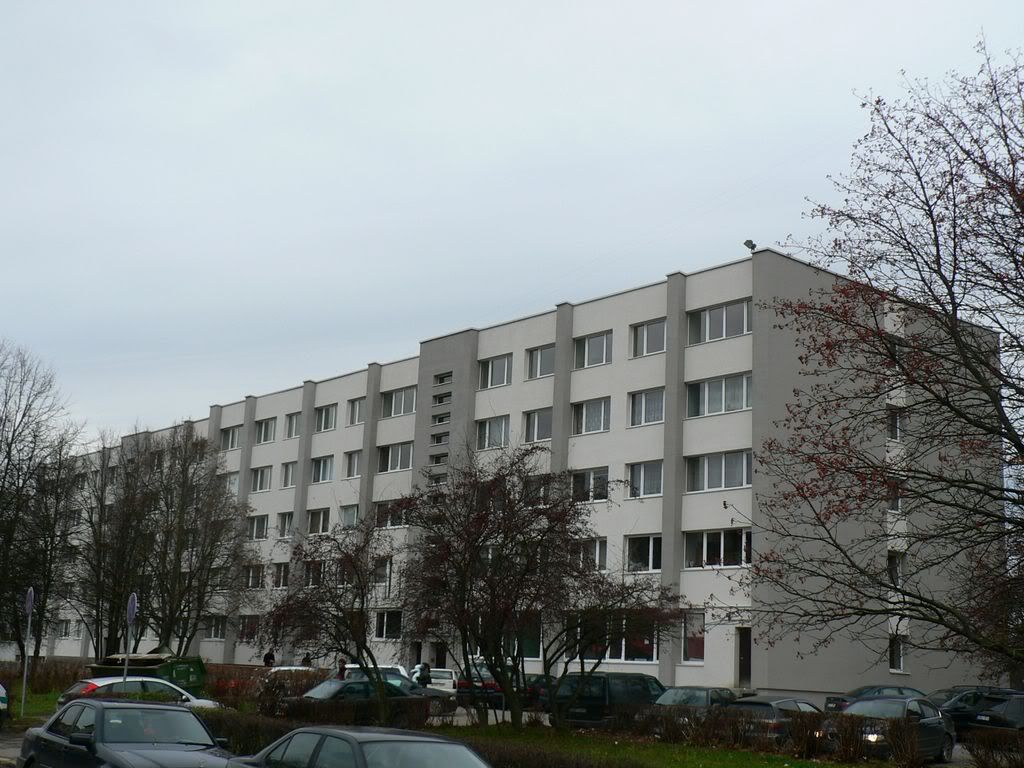
Renovated old corpus of Alexander Pushkin school (now the single Russian language school in Kaunas). This corpus was awfully "modernized" in the 1960s (there was old German gymnasium before WWII) but the look was slightly improved after renovation:
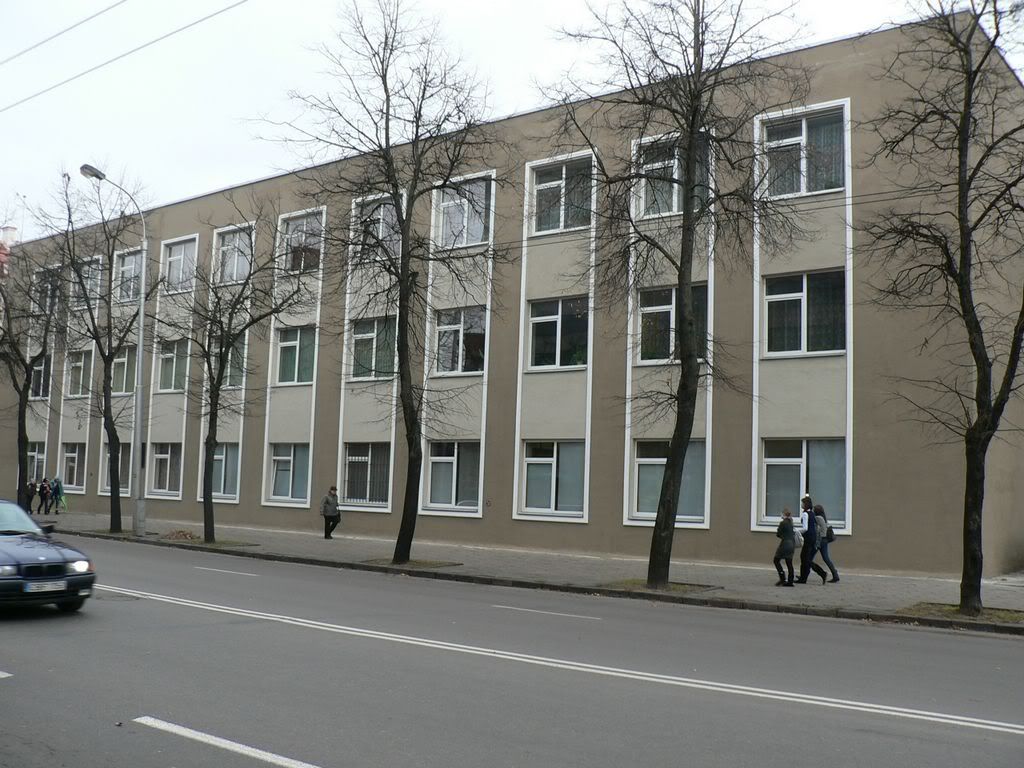
Some good renovation examples of individual houses or cottages:


But what here I see ? ...
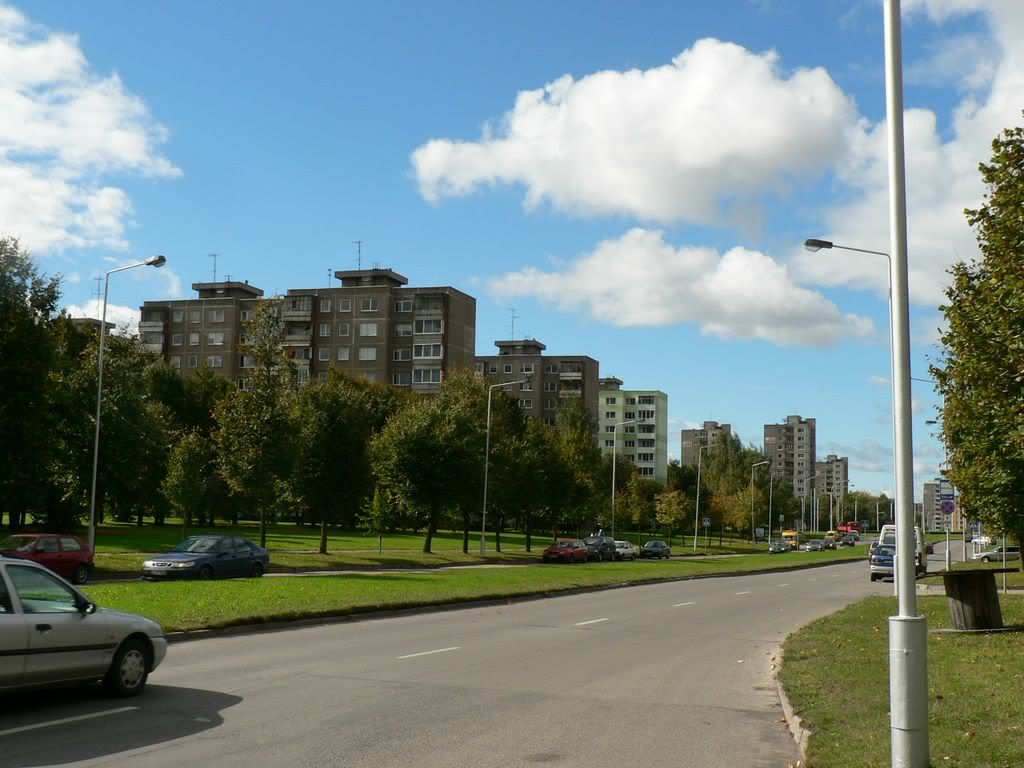
Oh, God save me from this "beauty" ...
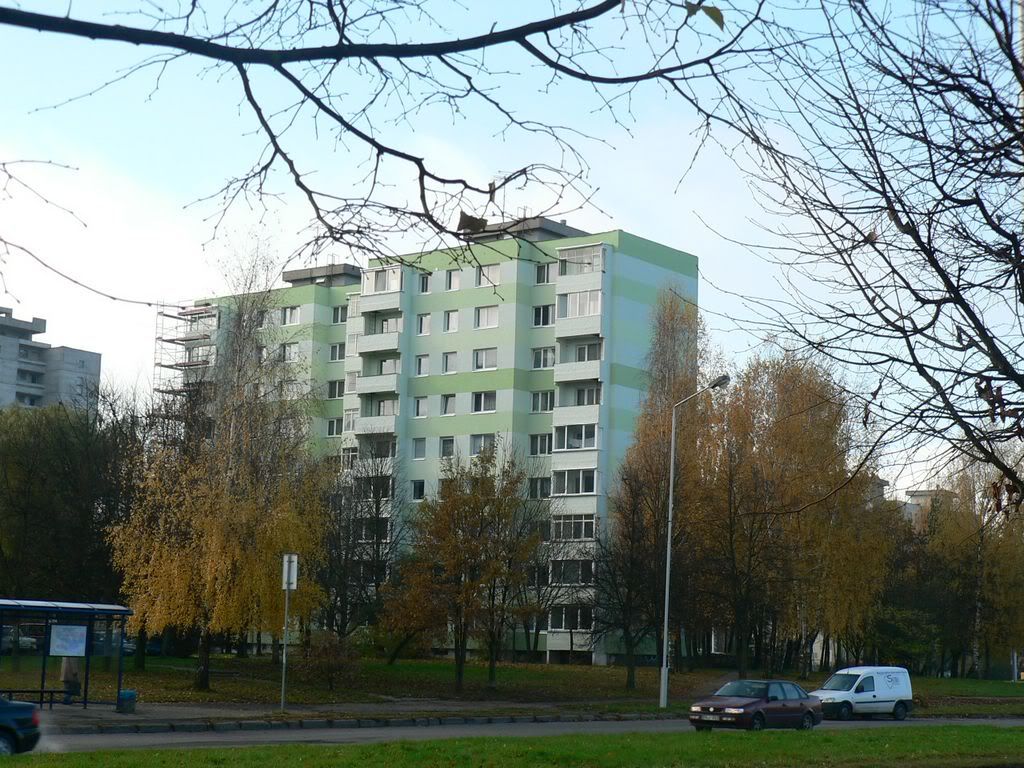
Why such experiments are necessary ? Several hundred meters away you can see good renovation example (but from 2009):
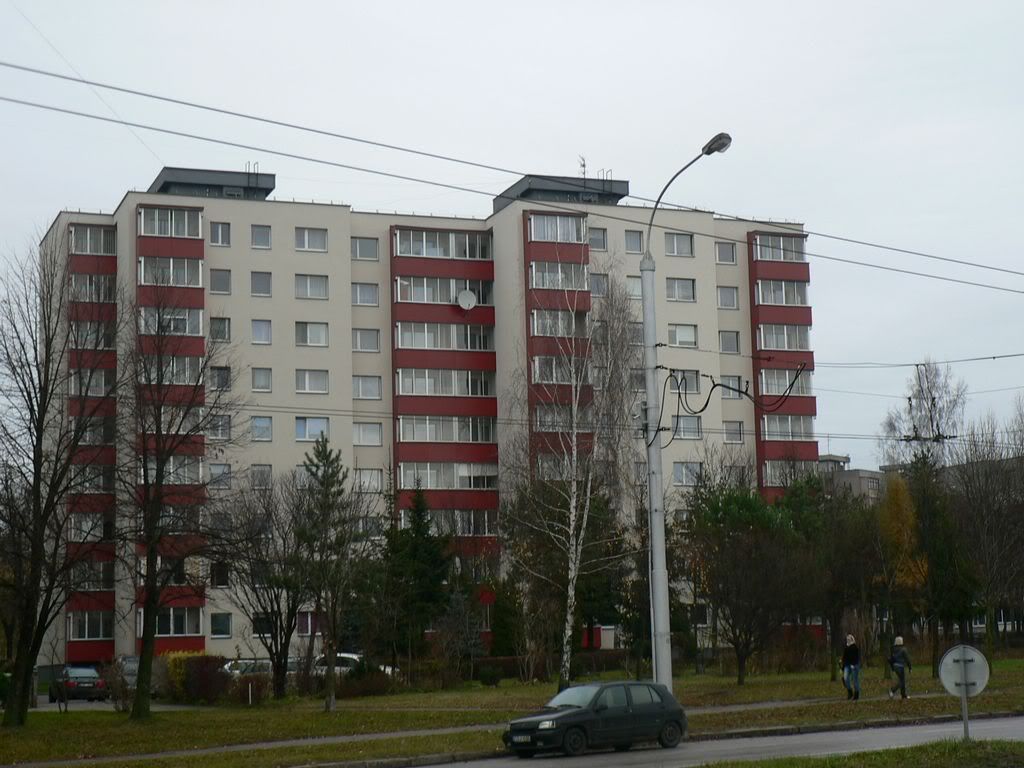
Another striped one. The results are still far from the end:
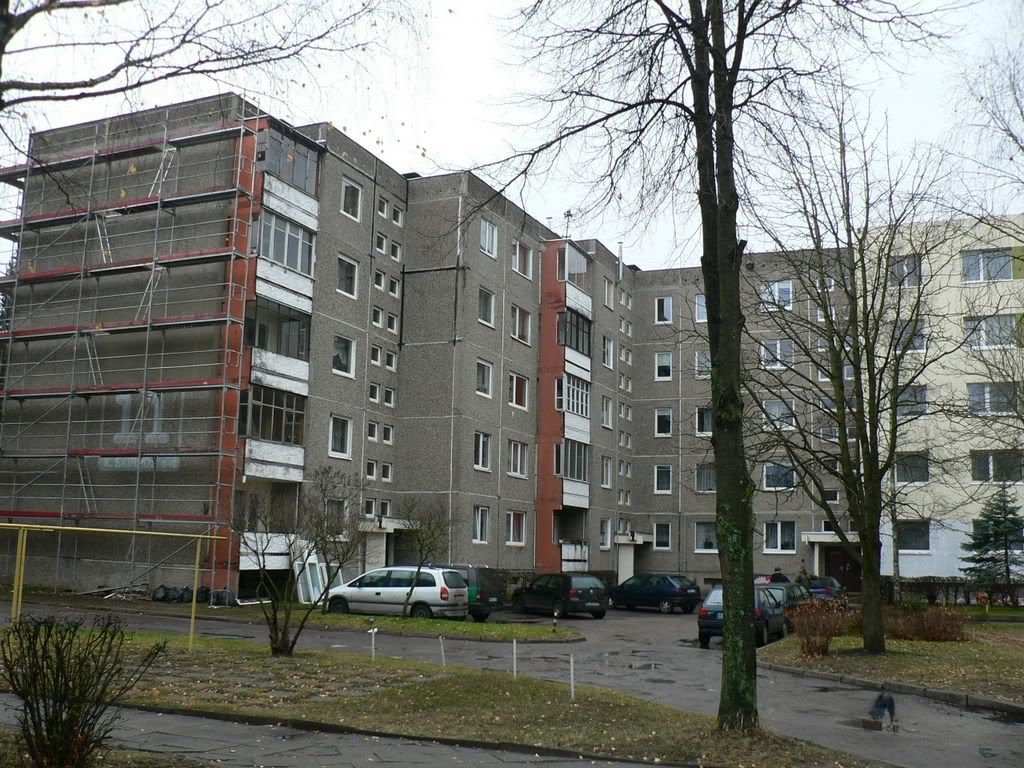
But we can imagine how it will look like :
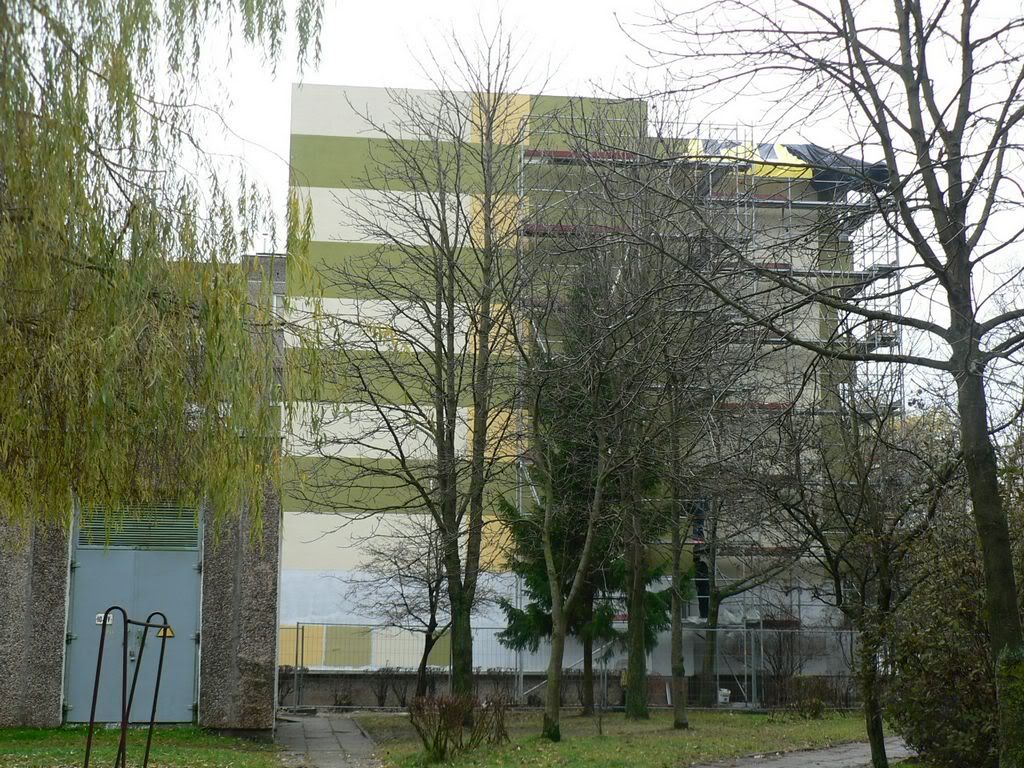
Another comedy - during the renovation of this house red plates were finished to early, factory stopped their production so the other part of the house was made gray (red-white-gray instead of red-white-red) :))
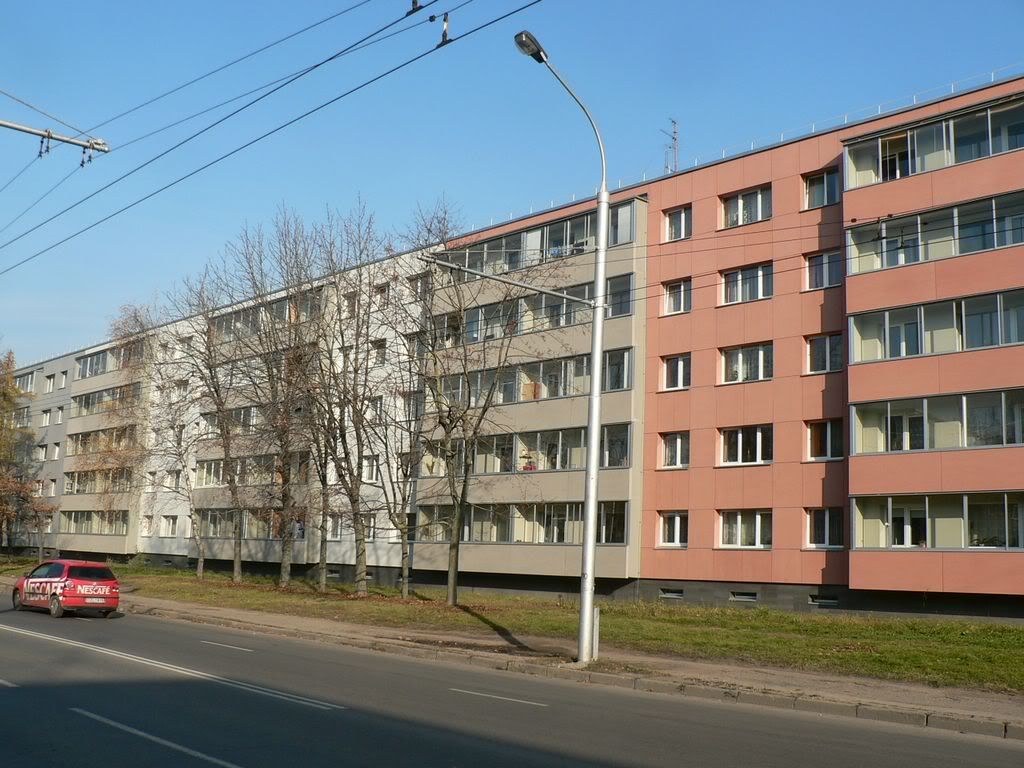
I hope that this is not finished ... Otherwise it will look at least strange ...
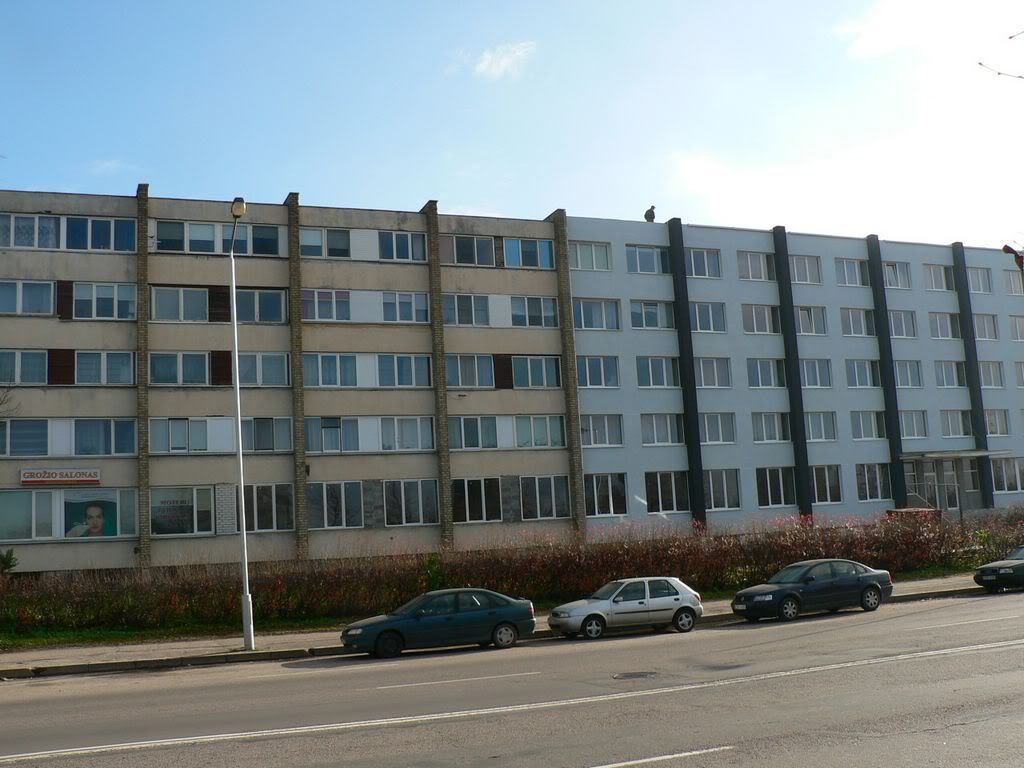
For test only :))) Garages with artist studios from 1988:
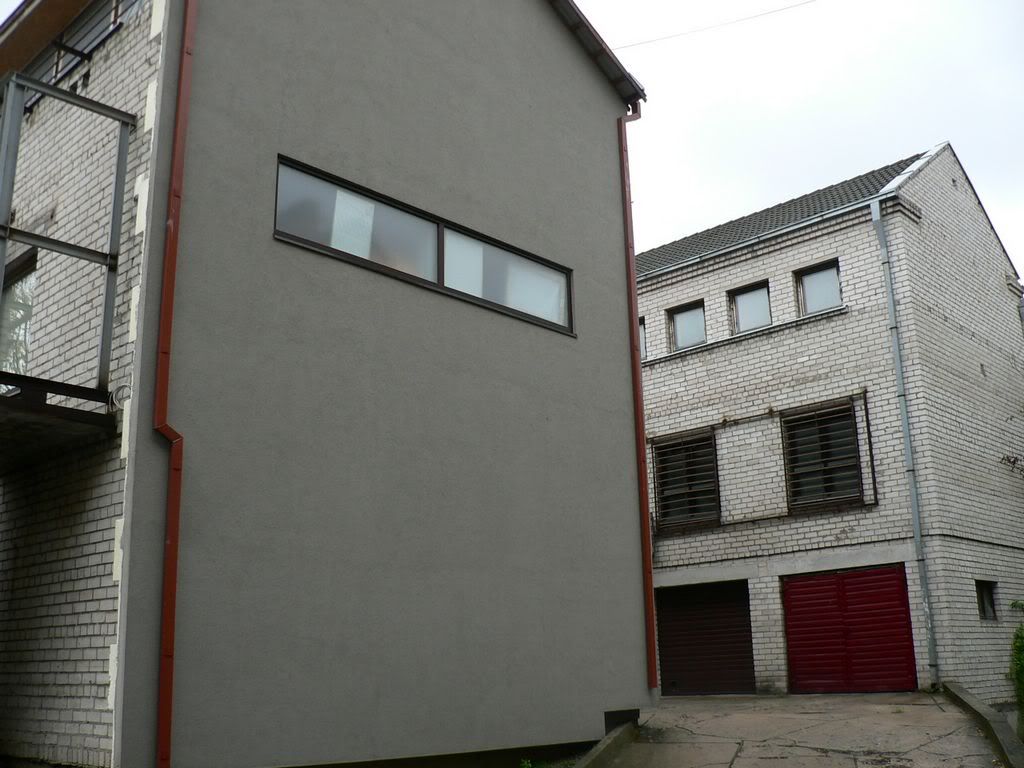
Economy on balconies ? What's an idiotism ...
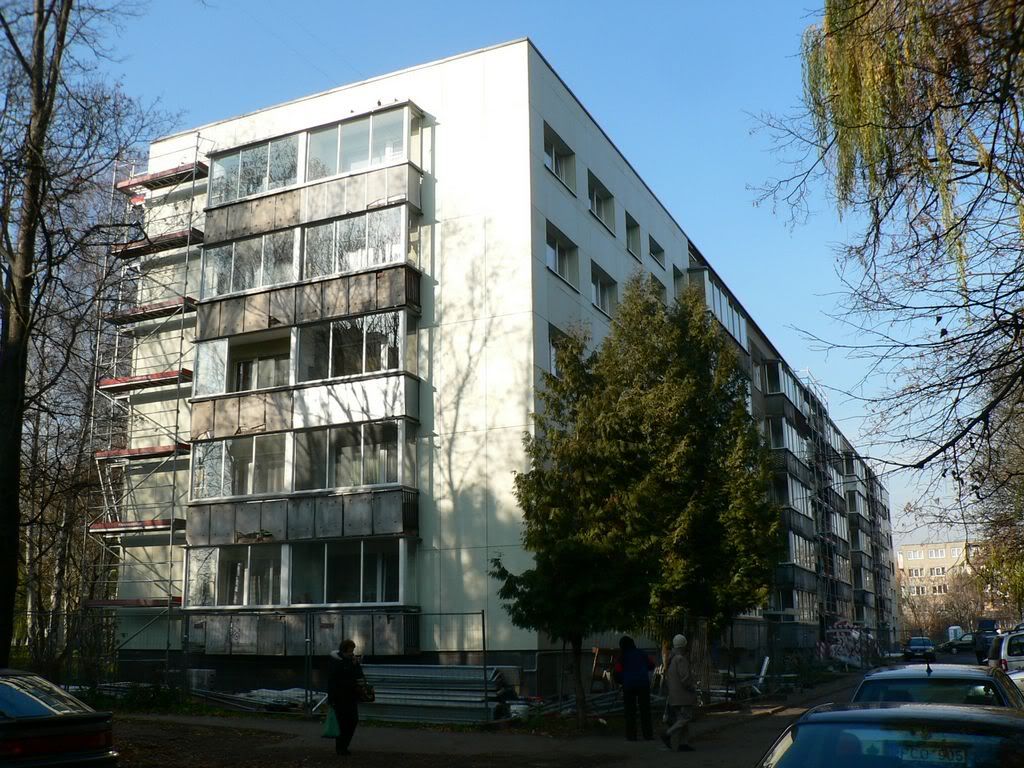
Good example infectious :)) Part of the building renovated several years ago now another part is under renovation:
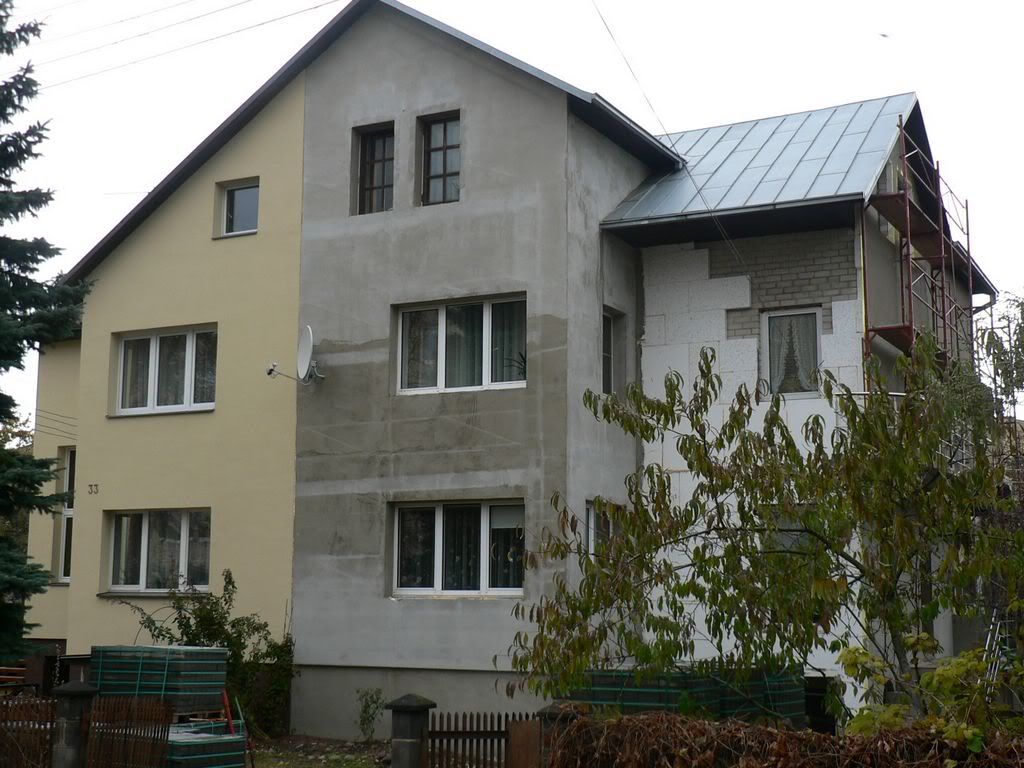
And again the lack of strategic thinking ? Relatively the new cottage (from around 2000) but also needs additional thermoinsulation :
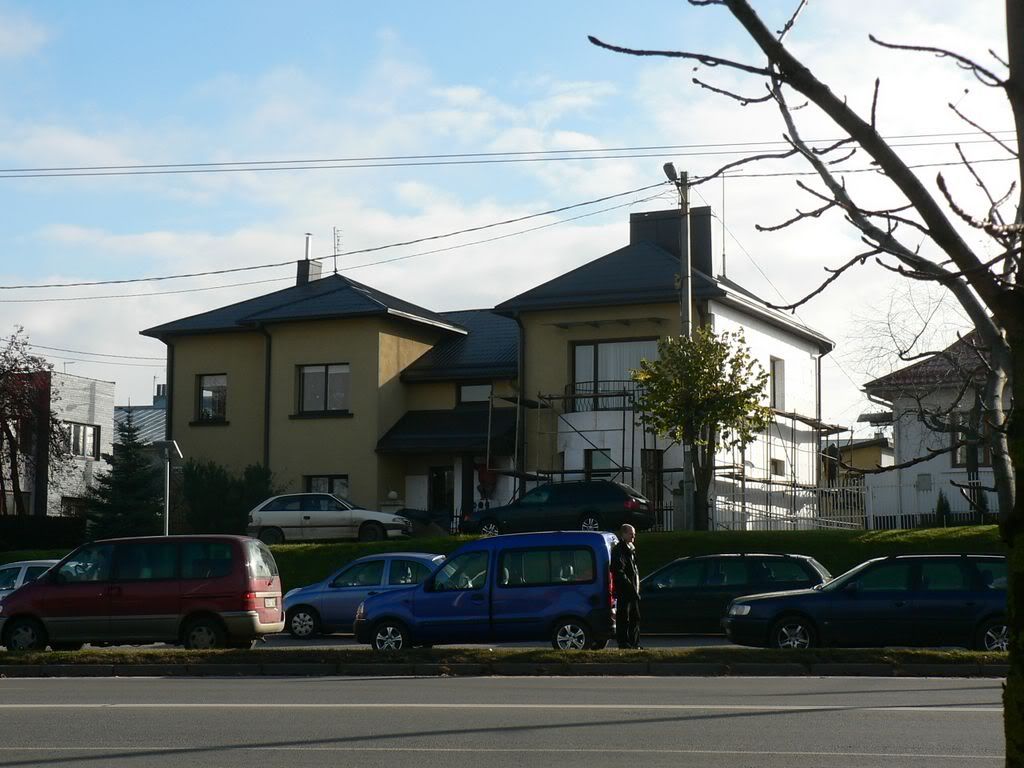
Ok, that's enough for today. In the third part I will pay my attention to the industrial buildings renovations.

counter widget

About 40% of the primary energy used in Europe is used in the households. In Lithuania this proportion is even higher: about 60% of the primary energy used in this country is used in the households. So everyone could imagine how big gains could be achieved implementing various means allowing to save the energy in the buildings ...
Despite the obvious necessity to use energy saving means the renovation of the multiflat residential buildings is probably the most difficult process in this country: early in the 1990s the houses were "privatized" (simply declaring that the actual residents are the owners of the flat) and now any activities requires to achieve the agreement with the owners of the house ... Despite that according the new laws it is sufficient to get agreement from the 50%+1 owner there are many cases when those unhappy residents are simply refusing to pay their financial part for the renovation ....
But some activities are going on anyway. And the results are different as we could expect.
The very typical form of the renovation is as follows.
Typical 9-story commieblocks last July during the process of renovation:


Ant the same buildings in November with their not renovated neighbors:


Older renovated houses. But my impression is that such style of renovation isn't long standing and 10 years later those buildings will look badly:


Probably the best case for the commieblock renovation. But this case is more expensive:


Contrast: renovated and not renovated :)

Another example: still not renovated house from early 1970s:

And it's recently renovated neighbor:

The example of good renovation: 5-story house has been renovated maintaining all former details and even the color:


When I was near this house in October I still found the remains of old heating system :)))

Even older houses pre-WWII time to time are renovated also to improve their thermical properties:

Two good 2010 renovation examples from the central street of Kaunas - Laisves aleja. Center anyway :)))


This house in the center wasn't only renovated - it was completely reconstructed. And I like the result:
Photo from May 2009:

And photo from November 2010:

This reconstruction I don't like ...

Renovated dormitory - better than was before:

Renovated old corpus of Alexander Pushkin school (now the single Russian language school in Kaunas). This corpus was awfully "modernized" in the 1960s (there was old German gymnasium before WWII) but the look was slightly improved after renovation:

Some good renovation examples of individual houses or cottages:


But what here I see ? ...

Oh, God save me from this "beauty" ...

Why such experiments are necessary ? Several hundred meters away you can see good renovation example (but from 2009):

Another striped one. The results are still far from the end:

But we can imagine how it will look like :

Another comedy - during the renovation of this house red plates were finished to early, factory stopped their production so the other part of the house was made gray (red-white-gray instead of red-white-red) :))

I hope that this is not finished ... Otherwise it will look at least strange ...

For test only :))) Garages with artist studios from 1988:

Economy on balconies ? What's an idiotism ...

Good example infectious :)) Part of the building renovated several years ago now another part is under renovation:

And again the lack of strategic thinking ? Relatively the new cottage (from around 2000) but also needs additional thermoinsulation :

Ok, that's enough for today. In the third part I will pay my attention to the industrial buildings renovations.
counter widget